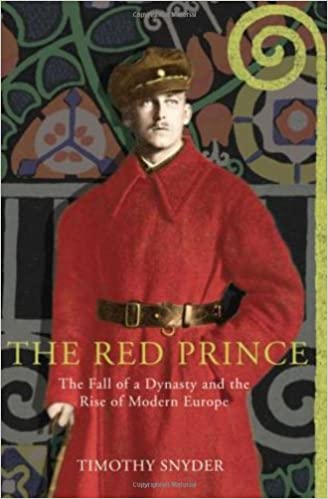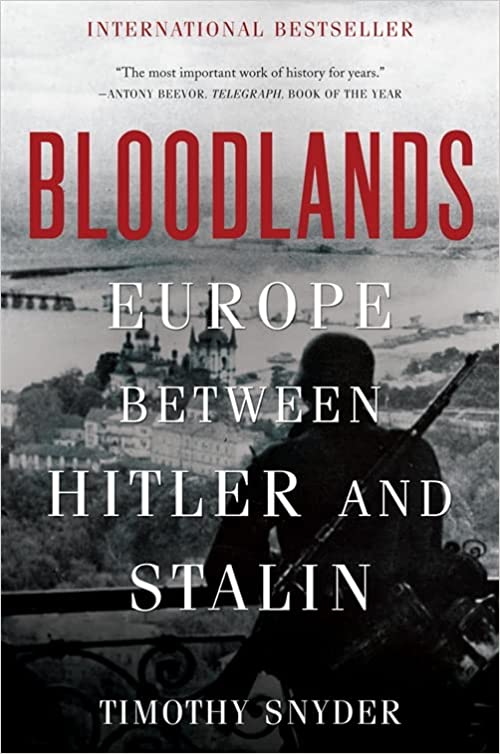
Timothy Snyder
蒂莫西·斯奈德
蒂莫西·斯奈德
蒂莫西·斯奈德(Timothy Snyder,1969—)當今美國傑出的歷史學家之一,現為耶魯大學歷史系教授、維也納人文科學學院終身研究員,主要研究方向為現代東歐史。是美國歷史學會頒發的喬治·路易·比爾獎獲得者,獲獎著作為《民族的重建:波蘭、烏克蘭、立陶宛、白俄羅斯:1569-1999》( The Reconstruction of Nations: Poland, Ukraine, Lithuania, Belarus, 1569-1999);還因為《一幅秘密戰爭的素描:一位解放蘇維埃烏克蘭的波蘭藝術家》(Sketches from a Secret War: A Polish Artist’s Mission to Liberate Soviet Ukraine)而獲得專業歷史著作獎;《紅色王子》(The Red Prince)被美國烏克蘭研究學會選定為烏克蘭歷史研究領域最佳圖書。另有《黑暗世界:作為歷史和警示的大屠殺》(Black Earth: The Holocaust as History and Warning)等。他的最新著作為《血色大地:希特勒與史達林之間的歐洲》(Bloodlands:Europe Between Hitler and Stalin)。此外,以對話的方式,斯奈德説明他的朋友、著名歷史學家托尼·朱特在彌留之際完成了最後一本書《思慮20世紀》。其著作獲得了包括艾默生人文獎、漢娜·阿倫特獎等在內的12項大獎。此外,他還是《現代歐洲歷史期刊》和《東歐政治和社會》的編委之一,其文章常常見諸《紐約書評》《外交事務》《新共和》《紐約時報》《華爾街日報》等媒體。
斯奈德教授如今居住在康涅狄格州紐黑文市。
作品

蒂莫西·斯奈德(Timothy Snyder)的這本《紅色王子:哈布斯堡大公的隱秘生活》重新詮釋了在民族認同和現代意識形態逐漸佔據主導的時代背景下,哈布斯堡王朝成員的個人歷史。其聚焦點是威廉·馮·哈布斯堡(Wilhelm Von Habsburg)這個 “紅色王子”。威廉·馮·哈布斯堡是哈布斯堡大公,金羊毛騎士團成員,奧地利軍官,烏克蘭上校,花花公子。另外,本書還講述了他的父親斯蒂芬(Stefan ,1860-1933)和哥哥阿爾佈雷希特(Albrecht ,1888-1951)。
斯奈德考察了在哈布斯堡帝國快速崩潰時代的哈布斯堡王朝成員的個人史。現代民族國家取代多民族帝國主要基於民族認同和現代意識形態的興起。在這樣一種新的地緣政治框架內,哈布斯堡帝國已經過時,這不僅體現在1918年帝國的滅亡,同時也體現於威廉、斯蒂芬和阿爾佈雷希特個人的不幸。
Wilhelm Von Habsburg wore the uniform of the Austrian officer, the court regalia of a Habsburg archduke, the simple suit of a Parisian exile, the collar of the Order of the Golden Fleece, and, every so often, a dress. He could handle a saber, a pistol, a rudder, or a golf club; he handled women by necessity and men for pleasure. He spoke the Italian of his archduchess mother, the German of his archduke father, the English of his British royal friends, the Polish of the country his father wished to rule, and the Ukrainian of the land Wilhelm wished to rule himself. In this exhilarating narrative history, prize-winning historian Timothy D. Snyder offers an indelible portrait of an aristocrat whose life personifies the wrenching upheavals of the first half of the twentieth century, as the rule of empire gave way to the new politics of nationalism. Coming of age during the First World War, Wilhelm repudiated his family to fight alongside Ukrainian peasants in hopes that he would become their king. When this dream collapsed he became, by turns, an ally of German imperialists, a notorious French lover, an angry Austrian monarchist, a calm opponent of Hitler, and a British spy against Stalin. Played out in Europe's glittering capitals and bloody battlefields, in extravagant ski resorts and dank prison cells, The Red Prince captures an extraordinary moment in the history of Europe, in which the old order of the past was giving way to an undefined future-and in which everything, including identity itself, seemed up for grabs.

From the bestselling author of On Tyranny comes the definitive history of Hitler's and Stalin's wars against the civilians of Europe in World War II.
Americans call the Second World War "The Good War."But before it even began, America's wartime ally Josef Stalin had killed millions of his own citizens--and kept killing them during and after the war. Before Hitler was finally defeated, he had murdered six million Jews and nearly as many other Europeans. At war's end, both the German and the Soviet killing sites fell behind the iron curtain, leaving the history of mass killing in darkness.
Bloodlands is a new kind of European history, presenting the mass murders committed by the Nazi and Stalinist regimes as two aspects of a single history, in the time and place where they occurred: between Germany and Russia, when Hitler and Stalin both held power. Assiduously researched, deeply humane, and utterly definitive, Bloodlands will be required reading for anyone seeking to understand the central tragedy of modern history.
Bloodlands won twelve awards including the Emerson Prize in the Humanities, a Literature Award from the American Academy of Arts and Letters, the Leipzig Award for European Understanding, and the Hannah Arendt Prize in Political Thought. It has been translated into more than thirty languages, was named to twelve book-of-the-year lists, and was a bestseller in six countries.